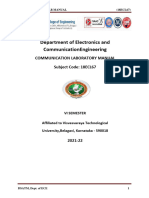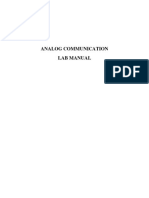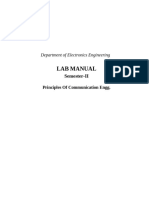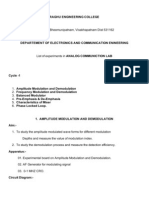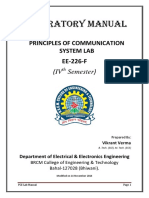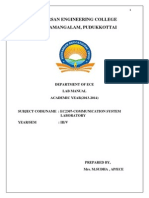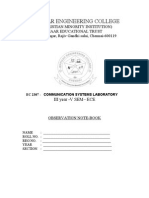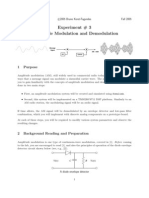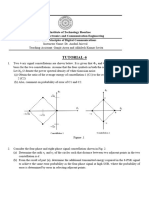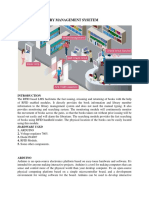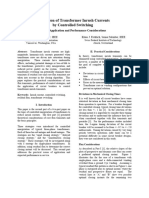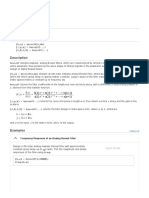0% found this document useful (0 votes)
78 views6 pagesExperiment 1 AM Modulation and Demodulation
The document outlines Experiment #1 for EEP3010: Communication Systems Lab, focusing on amplitude modulation (AM) and demodulation. It details the required equipment, procedures for both time and frequency domain analysis, and steps for observing and calculating modulation parameters. The experiment emphasizes proper tuning and adjustments to achieve critical modulation and effective demodulation of signals.
Uploaded by
Shiva Sai KoishikCopyright
© © All Rights Reserved
We take content rights seriously. If you suspect this is your content, claim it here.
Available Formats
Download as PDF, TXT or read online on Scribd
0% found this document useful (0 votes)
78 views6 pagesExperiment 1 AM Modulation and Demodulation
The document outlines Experiment #1 for EEP3010: Communication Systems Lab, focusing on amplitude modulation (AM) and demodulation. It details the required equipment, procedures for both time and frequency domain analysis, and steps for observing and calculating modulation parameters. The experiment emphasizes proper tuning and adjustments to achieve critical modulation and effective demodulation of signals.
Uploaded by
Shiva Sai KoishikCopyright
© © All Rights Reserved
We take content rights seriously. If you suspect this is your content, claim it here.
Available Formats
Download as PDF, TXT or read online on Scribd
/ 6
